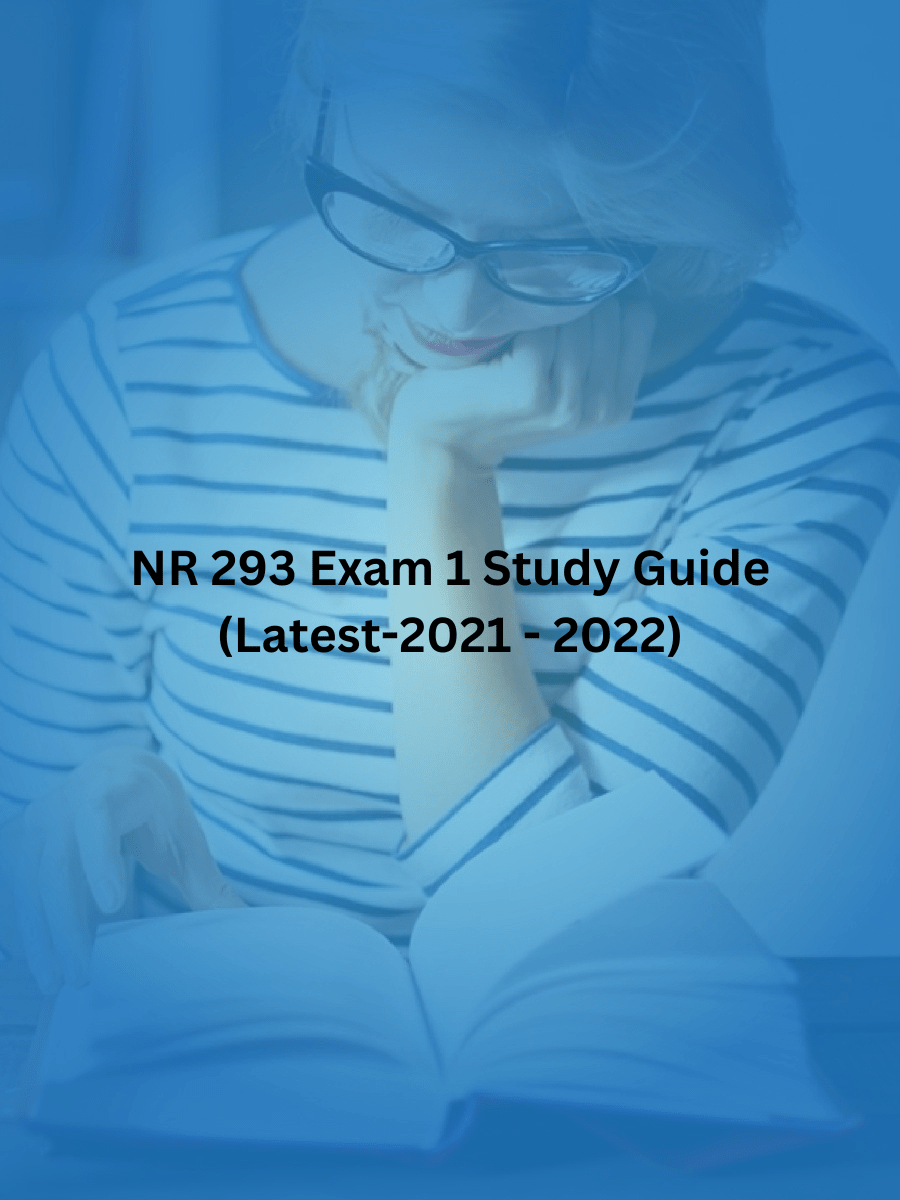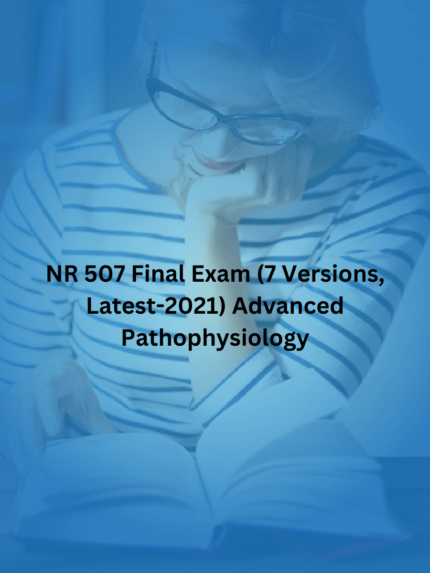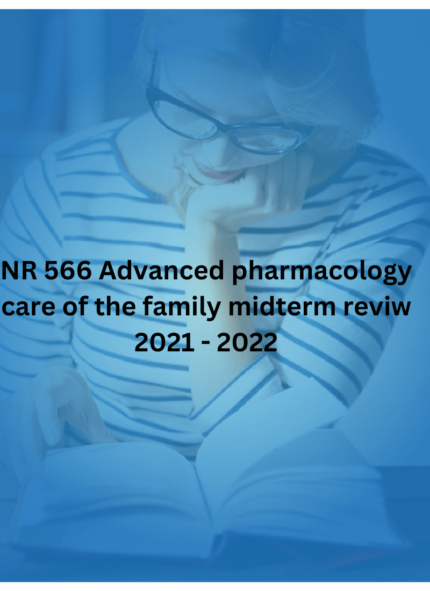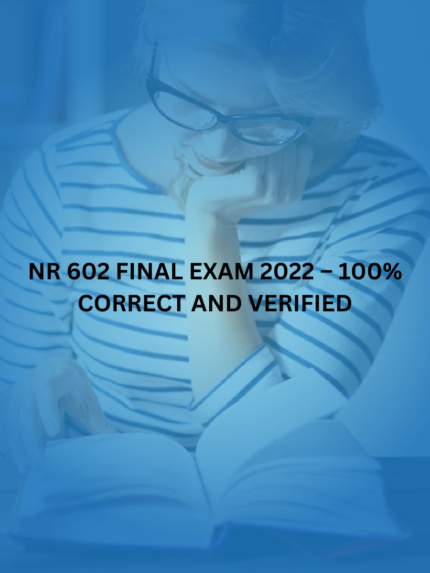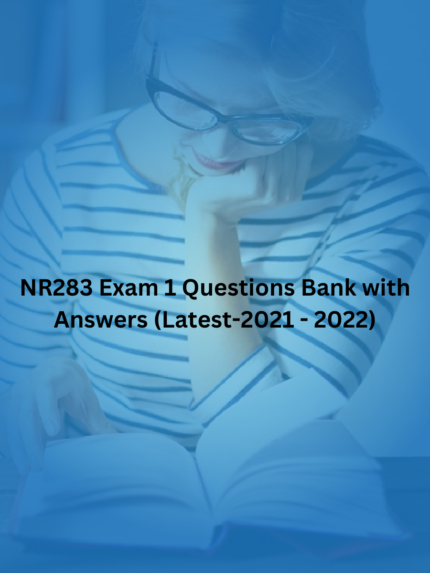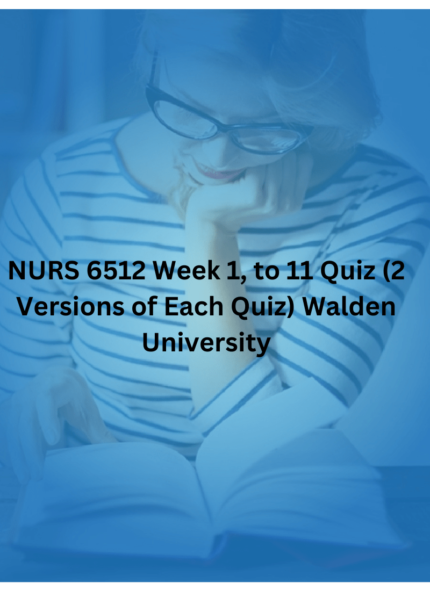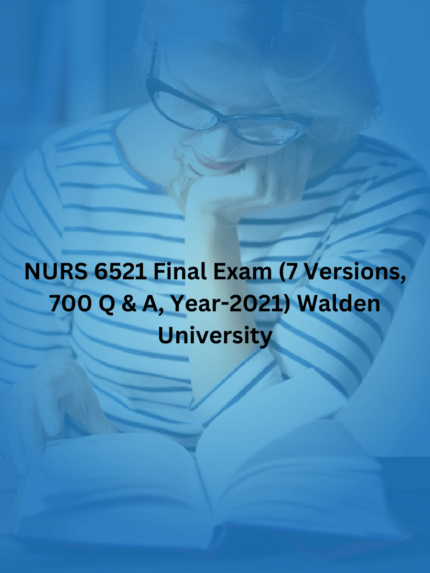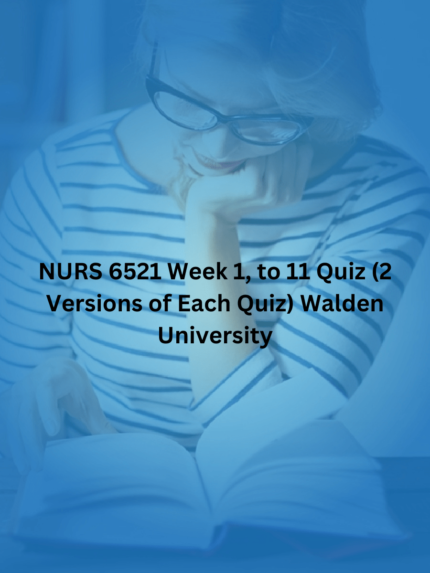NR 293 Exam 1 Study Guide (Latest-2021 – 2022)
Chapter 2
Study Guide for NR 293Exam 1
. Define the common terms used in pharmacology
o Pharmacokinetic- the study of what the body does to the drug; involves the processes of
absorption, distribution, metabolism, and excretion; the study of what happens to a drug from the time it is put into the body until the parent drug and all metabolites have left the body; represent the drug absorption into, distribution, and metabolism within, and excretion from the body
o Pharmacodynamics- the study of what the drug does to the body; involves drug–receptor relationships.
o First-pass effect- initial metabolism in the liver of a drug absorbed from the GI tract before the drug reaches systemic circulation through the bloodstream; reduces the bioavailability of less than 100%, whereas drugs administered by the intravenous route are 100% bioavailable
o Bioavaibility- a measure of the extent of drug absorption for a given drug and route (from 0% to 100%)
o Protein-binding
o Onset of action- time required for a drug to elicit a therapeutic response after dosings
o Peak Effect – the time required for a drug to reach its max. therapeutic response
o Duration of action- the length of time the concentration of a drug in the blood or tissues
is sufficient to elicit a response
o Half-life – in pharmacokinetics, the time required for half of an administered dose of
drug to be eliminated by the body, or the time it takes for the blood level of a drug to be
reduced
o Therapeutic index- ratio btwn toxic and therapeutic concentrations of a drug
o Trough level- lowest blood level; the lowest concentration of a drug reached in the body
after it falls from its peak level, usually measured in blood sample for therapeutic drug
monitoring
o Peak level- highest blood level; done usually at 12th level after 3rd dose; the max.
concentration of a drug in the body after administration, usually measured in a blood
sample for therapeutic drug monitoring
o Agonist- drug that binds to and stimulates the activity of one or more receptors in the
body
o Antagonist- drug that binds to and inhibits the activity of one or more receptors in the
body; also called inhibitors Type of therapy:
o Acute therapy- often involves more intensive drug treatment and implemented in acutely ill (those with rapid onset of illness) or critically ill; often needed to sustain life or treat disease
Ex: vasopressors to maintain BP and cardiac output after open heart surgery
Ex: intensive chemotherapy for pt with newly diagnosed cancer
o Maintenance therapy- doesn’t eradicate problems the pt may already have but will prevent progression of a disease or condition; used for treatment of chronic illnesses
- Ex: HTN it will maintain the pt’s BP within given limits which prevents certain end-organ damage
- Ex: oral contraceptives for birth control
1
o Supplemental therapy- or replacement therapy; supplies body with a substance needed to maintain normal function; substance may be needed bc it cannot be made by the body or bc it is produced in insufficient quantity
Ex: administration of insulin to diabetic pt’s
Ex: iron to pts w/ iron-deficiency anemia
o Palliative therapy- make pt as comfortable as possible; focuses on providing pts w/
relief from symptoms, pain, and stress of a serious illness; goal is to improve quality of life for both pt and family; typically used in the end stages of an illness when attempts at curative therapy have failed; it can be provided along with curative treatment

